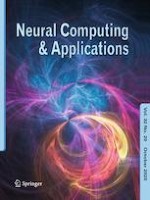07.03.2020 | S.I. : Applying Artificial Intelligence to the Internet of Things
AI for dynamic packet size optimization of batteryless IoT nodes: a case study for wireless body area sensor networks
Erschienen in: Neural Computing and Applications | Ausgabe 20/2020
EinloggenAktivieren Sie unsere intelligente Suche, um passende Fachinhalte oder Patente zu finden.
Wählen Sie Textabschnitte aus um mit Künstlicher Intelligenz passenden Patente zu finden. powered by
Markieren Sie Textabschnitte, um KI-gestützt weitere passende Inhalte zu finden. powered by
